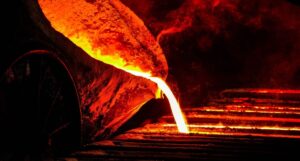
Metinvest Group’s KAMETSTAL plant in Dnipro Metallurgical Plant (Kamianske, Dnipro region) has mastered a new steel casting technology using continuous casting machine No. 1 to increase the output of high-quality billets.
According to the press release, in 2024, KAMETSTAL’s BOF Shop expanded the range of high-quality billets and increased the production of CCMs using this technology. This year, steelmakers are facing new challenges to improve the efficiency of stop casting.
It is explained that the main feature of this technology is to cover the steel jet with a dipping cup in the gap between the tundish and the crystallizer of the continuous casting machine. In this way, the hot metal is protected from the negative effects of secondary oxidation, which gives the billet improved quality to meet the requirements of consumers in both the European and domestic markets. This technology makes it possible to produce metal with higher requirements for chemical composition and macrostructure, and the margin profit from it is higher than from conventional billets.
Last year, as part of the program for the development of new products, Section CCM No. 1 successfully mastered the production of continuously cast billets with a cross section of 200×200 mm with increased requirements for chemical composition and macrostructure from 40X, 45X1 and 45 steels, which are used to produce 130 mm diameter wheels.
“Successful mastering of the required quality parameters made it possible to transfer the production of such a billet from CCM #2 to the first machine and make the products more efficient. In 2024, 2,940 tons of new billets were cast and shipped to Ukrainian and European customers, as well as for the internal needs of Kametstal’s rollers,” the plant’s information states.
It adds that the key tasks currently being addressed by the team of specialists involved in the program, in addition to expanding the product line, include testing the automatic start-up of the machine’s jets during stop casting. Starting CCMs in the AutoStart mode means, first of all, improving the quality of the cast metal by minimizing the influence of the human factor on this process.
“Kametstal was established on the basis of PJSC Dneprovsky Coke and Chemical Plant (DKKhZ) and the Centralized Steel Mill of PJSC Dneprovsky Metallurgical Plant (DMK).
According to the 2020 report of Metinvest Group’s parent company, Metinvest B.V. (Netherlands) owned 100% of the shares in DCCP.
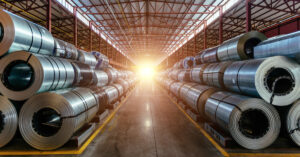
Apparent steel consumption (including total steel production, imports and exports) in the European Union in 2024, according to preliminary estimates by Eurofer, fell by 2.3% to 127 million tons.
This is worse than the association’s previously published expectations, according to which the decline could be 1.8%. In 2023, steel consumption in the EU fell by 5.8% to 130 million tons.
According to Eurofer’s report, in 2025, the recovery in apparent steel consumption will be slower than the association had previously predicted – the growth is expected to be 2.2% against 3.8% previously expected, provided that the situation in the industry develops positively and global tensions ease, which is currently unpredictable.
Consumption may reach about 130 million tons in 2025 and 133 million tons in 2026.
The overall dynamics of steel demand in the European region remains highly uncertain. No improvement in apparent steel consumption is expected until the first quarter of 2025, and consumption volumes will remain well below pre-pandemic levels, the association notes.
In the third quarter of 2024, apparent steel consumption continued to decline (-0.9% after -1.4% in the previous quarter) and amounted to 30.4 million tons.
Data for the fourth quarter will be published later. Real steel consumption in 2024, according to preliminary data, decreased by 3.8% in the EU, and in 2025 it is expected to recover moderately by 1%, while previously it was forecast to grow by only 0.6%. In 2026, real steel consumption could grow by another 1.9%.
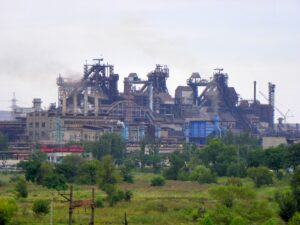
In December 2024, Ukrainian steelmakers increased steel production by 4.1% compared to the same period in 2023, to 547 thousand tons from 520 thousand tons, and by 1.1% compared to the previous month, when they produced 541 thousand tons.
At the same time, Ukraine ranked 23rd among 71 countries in the ranking of global producers of these products compiled by the World Steel Association (Worldsteel).
According to Worldsteel, in December 2024, steel production decreased compared to December 2023 in most of the top ten countries, except for China, India, Germany and Brazil.
The top ten steel producing countries in December are as follows: China (75.970 million tons, +11.8% by December 2023), India (13.582 million tons, +9.5%), Japan (6.907 million tons, -1.1%), the United States (6.684 million tons, -2.4%), and the Russian Federation (5.7 million tons, -8.6%), South Korea (5.209 million tons, -3.2%), Turkey (2.978 million tons, -7.6%), Germany (2.744 million tons, +4.1%), Iran (2.581 million tons, -8.2%) and Brazil (2.573 million tons, +1.8%).
Overall, in December 2024, steel production increased by 5.6% compared to the same period in 2023 to 144.460 million tons.
For 12 months of 2024, the top ten steel-producing countries are as follows: China (1 billion 5,090 million tons, -1.7%), India (149,587 million tons, +6.3%), Japan (84,009 million tons, -3.4%), the United States (79,452 million tons, -2.4%), the Russian Federation (70,690 million tons, -7%), South Korea (63, 531 million tons, -4.7%), Germany (37.234 million tons, +5.2%), Turkey (36.893 million tons, +9.4%), Brazil (33.741 million tons, +5.3%) and Iran (30.952 million tons, +0.8%).
In total, 71 countries produced 1 billion 839.449 million tons of steel in 2024, which is 0.9% less than in 2023.
At the same time, Ukraine produced 7.575 million tons of steel in 2024, up 21.6% from 6.228 million tons in 2023. The country was ranked 20th in 2024.
As reported, in 2023, China produced 1 billion 19.080 million tons at the level of the previous year), India (140.171 million tons, +11.8%), Japan (86.996 million tons, -2.5%), the United States (80.664 million tons, +0.2%), The Russian Federation (75.8 million tons, +5.6%), South Korea (66.676 million tons, +1.3%), Germany (35.438 million tons, -3.9%), Turkey (33.714 million tons, -4%), Brazil (31.869 million tons, -6.5%) and Iran (31.139 million tons, +1.8%).
In total, 71 countries produced 1 billion 849.734 million tons of steel in 2023, which is 0.1% less than in 2022.
At the same time, Ukraine produced 6.228 million tons of steel in 2023, which is 0.6% lower than in 2022. The country was ranked 22nd in 2023.
In 2022, the top ten steel-producing countries were as follows: China (1.013 billion tons, -2.1%), India (124.720 million tons, +5.5%), Japan (89.235 million tons, -7.4%), the United States (80.715 million tons, -5.9%), the Russian Federation (71.5 million tons, -7.2%), South Korea (65, 865 million tons, -6.5%), Germany (36.849 million tons, -8.4%), Turkey (35.134 million tons, -12.9%), Brazil (33.972 million tons, -5.8%) and Iran (30.593 million tons, +8%).
Ukraine ranked 23rd in 2022 with 6.263 million tons of steel produced (-70.7%).
In total, 64 countries produced 1 billion 831.467 million tons of steel in 2022, which is 4.3% less than in 2021.
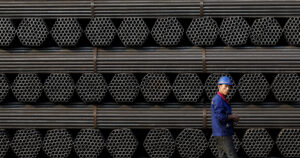
According to Worldsteel, in November 2024, steel production increased compared to November 2023 in most of the top ten countries, except for Japan, the United States, Russia and South Korea.
The top ten steel producing countries in November are as follows: China (78.4 million tons, +2.5% by November 2023), India (12.384 million tons, +4.5%), Japan (6.888 million tons, -3.1%), the United States (6.378 million tons, -2.8%), the Russian Federation (5.450 million tons, -9.2%), South Korea (5.190 mln tons, -3.6%), Iran (3.074 mln tons, +0.1%), Turkey (3.011 mln tons, +0.7%), Germany (2.909 mln tons, +8.6%) and Brazil (2.774 mln tons, +1.9%).
Overall, in November this year, steel production increased by 0.8% year-on-year to 146.831 million tons.
For 11 months of 2024, the top ten steel producing countries are as follows: China (929.190 million tons, -2.7%), India (135.932 million tons, +5.9%), Japan (77.102 million tons, -3.6%), the United States (72.879 million tons, -2.2%), the Russian Federation (64.885 million tons, -7%), South Korea (58, 297 million tons, -4.9%), Germany (34.490 million tons, +5.3%), Turkey (33.915 million tons, +11.2%), Brazil (31.168 million tons, +5.6%) and Iran (28.030 million tons, +0.5%).
In total, 71 countries produced 1 billion 694.593 million tons of steel in January-November, down 1.4% from the same period in 2023.
At the same time, Ukraine produced 7.028 million tons of steel in 11 months of 2024, up 23.1% compared to January-November 2023. The country is ranked 20th in the first 11 months of 2014.
As reported, in 2023, China produced 1 billion 19.080 million tons at the level of the previous year), India (140.171 million tons, +11.8%), Japan (86.996 million tons, -2.5%), the United States (80.664 million tons, +0.2%), Russia (75.8 million tons, +5.6%), South Korea (66.676 million tons, +1.3%), Germany (35.438 million tons, -3.9%), Turkey (33.714 million tons, -4%), Brazil (31.869 million tons, -6.5%) and Iran (31.139 million tons, +1.8%).
At the end of 2022, the top ten steel producing countries looked like this: China (1.013 billion tons, -2.1%), India (124.720 million tons, +5.5%), Japan (89.235 million tons, -7.4%), the United States (80.715 million tons, -5.9%), the Russian Federation (71.5 million tons, -7.2%), South Korea (65, 865 million tons, -6.5%), Germany (36.849 million tons, -8.4%), Turkey (35.134 million tons, -12.9%), Brazil (33.972 million tons, -5.8%) and Iran (30.593 million tons, +8%).
In 2022, Ukraine ranked 23rd with the production of 6.263 million tons of steel (-70.7%).
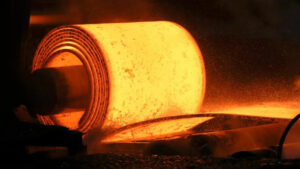
“Metinvest, Ukraine’s largest mining and metals holding, increased steel production by 5% year-on-year to 1.610 million tonnes and pig iron production by 2% to 1.367 million tonnes in January-September this year, but reduced total coke production by 11% to 846 thousand tonnes.
According to the press release of the parent company Metinvest B.V. on the operating results for 9M2024, due to the start of Russia’s large-scale military aggression against Ukraine on February 24, 2022, the group’s Ukrainian enterprises (except for those located in Mariupol and Avdiivka) continue to operate at different levels of utilization due to security, staff availability, electricity supply, as well as logistical and economic factors.
At the same time, in the third quarter of 2024, pig iron and steel production at Kametstal remained almost at the level of the previous quarter and amounted to 483 thousand tons and 568 thousand tons, respectively.
In the first nine months of 2024, steel production increased due to an increase in the order book for steel products.
In the third quarter, production of finished products decreased by 19% quarter-on-quarter to 491 thousand tons. In particular, flat products production decreased by 29% to 185 thousand tonnes, which was driven by several factors: first, the irregular operation of Ferriera Valider (Italy), which depends on marginal orders amid unfavorable European market conditions; and second, the scheduled overhaul of the rolling mills in Italy and the UK in August.
Production of long products decreased by 11% to 306 thousand tons due to the scheduled shutdown of Promet Steel (Bulgaria) for overhaul in August.
In January-September 2024, production of finished products decreased by 3% compared to the same period in 2023, to 1.678 million tons. In particular, flat products production decreased by 14% to 729 thousand tonnes over the nine months due to unfavorable conditions in the European market, which resulted in the absence of marginal orders for hot-rolled coils and a decrease in the order book for hot-rolled plates. At the same time, production of galvanized cold-rolled coils increased by 65% as Unisteel’s 4th inductor in Ukraine resumed operations after it was shut down for overhaul in Q2 last year.
Production of long products increased by 8% to 949 thousand tons due to an increase in the order book for Kametstal and Promet Steel products.
In the third quarter of 2024, coke production remained at the level of the previous quarter and amounted to 282 thousand tons.
In 9M2024, coke production decreased by 11% year-on-year due to the shutdown of some coking chambers at Kametstal’s coke oven battery No. 1 in early 2024.
“Metinvest comprises mining and steel production facilities located in Ukraine, Europe and the United States. Its major shareholders are SCM Group (71.24%) and Smart Holding (23.76%), which jointly manage it.
Metinvest Holding LLC is the management company of Metinvest Group.
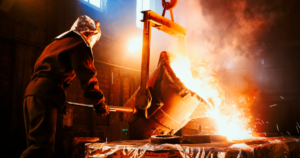
In June this year, Ukrainian steelmakers increased steel production to 735 thousand tons, up 68.4% year-on-year (436 thousand tons), but down 0.4% from the previous month, when they produced 738 thousand tons.
At the same time, Ukraine took 20th place in the ranking of 71 countries that are global producers of this product, compiled by the World Steel Association (Worldsteel).
The top ten steel-producing countries in June are as follows: China (91.610 million tons, up 0.2% by June 2023), India (12.258 million tons, up 6%), Japan (7.022 million tons, down 4.2%), USA (6.659 million tons, minus 1.5%), Russian Federation (6.030 million tons, down 4.1%), South Korea (5.132 million tons, down 7.2%), Germany (3.187 million tons, up 8.9%), Turkey (3.071 million tons, up 4.3%), Brazil (2.874 million tons, up 11.8%) and Iran (2.612 million tons, down 8.5%).
In total, in June 2024, steel production increased by 0.5% compared to the same period in 2023 to 161.399 million tons.
In January-June 2014, the top ten steel producing countries were as follows: China (530.570 million tons, down 1.1% compared to January-June 2023), India (74.184 million tons, up 7.4%), Japan (42.696 million tons, down 2.6%), the United States (39.960 million tons, down 2.4%), and the Russian Federation (36.815 million tons, down 3%), South Korea (31.526 million tons, down 6.4%), Germany (19.360 million tons, up 4.5%), Turkey (18.615 million tons, up 16.9%), Iran (16.647 million tons, up 5.9%) and Brazil (16.433 million tons, up 2.4%).